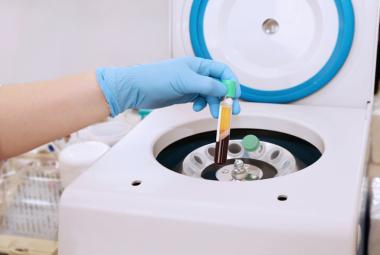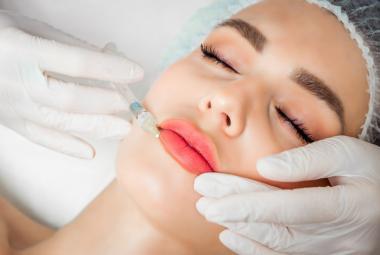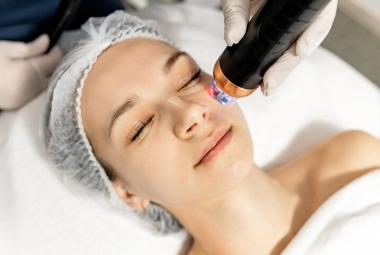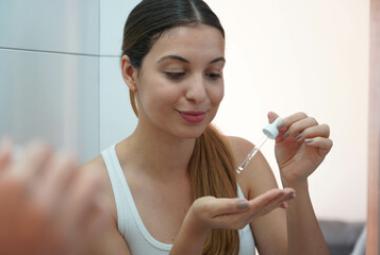Some people dread the change of seasons. Shorter, darker days mean fatigue, oversleeping, too many carbs, and having a general sense of malaise: a pattern known as seasonal affective disorder (SAD). Seasonal affective disorder is depression that occurs during late fall and winter months, as darkness occurs earlier in the day. Symptoms include depression, lethargy, difficulty waking, and craving carbohydrates, which often leads to weight gain.1 Seasonal depression may be an issue for some of the women we see. Fortunately, safe treatments for pregnant and breastfeeding women are available.
For more than 20 years, clinicians have used bright light therapy to successfully treat seasonal affective disorder. Light therapy has far fewer side effects than medications and can provide relief within days.1 In a recent clinical trial, light therapy was as effective as fluoxetine (Prozac) in relieving symptoms, and patients who received light therapy had an earlier response to treatment with fewer side effects.2
Researchers have recently discovered that light therapy is also helpful for other affective disorders, including non-seasonal depression, antenatal and postpartum depression, bipolar disorder, some eating disorders, and certain sleep disorders.3, 4In a recent meta-analysis, the American Psychiatric Association indicated that bright light therapy was an effective treatment for both seasonal and non-seasonal depression, and was as effective as medications.5
Light therapy can also be safely combined with medications in most cases, and can boost the activity of medications in patients who are either not responding or who have had a partial response. Terman and Terman4 summarized the results of several recent clinical trials where patients were given either bright light therapy (10,000 lux) or dim light (2,500 lux) in addition to their medications. They noted that in all of these studies, bright light improved remission rate and sped improvement.
Light Intensity, Duration, and Timing of Light Exposure
Although a number of light intensities have been investigated, lights with intensities of 10,000 lux, with 30 to 40 minutes of exposure, appear most effective.4 Two studies with light exposures of 30-40 minutes at 10,000 lux achieved a 75% remission rate. It took 2 hours to achieve similar remission rates with 2,500 lux. And in some cases, even with longer exposure, lower-intensity lights are not as effective.4 Also, when longer exposure times are necessary, patients are less likely to comply. This may particularly be true for mothers of young children who probably won’t find it practical to sit for two to three hours in front of a light box.
Timing of light exposure also makes a difference. Exposure to bright light is generally much more successful in achieving remission if it occurs in the morning. Terman and Terman4 cited one analysis of 332 patients, across 25 different studies, that compared administration of light in the morning, mid-day and evening. They noted remission rates after one week of treatment, with significantly higher rates in the morning (53%), compared with mid-day (32%) and evening (38%) exposures. According to their analysis, morning light should be administered 8.5 hours after a patient’s melatonin onset.
Because of the effectiveness of morning light exposure, a variant to standard light therapy has recently been added to the repertoire of possible treatments: dawn simulation. As the name implies, dawn simulation refers to a light that comes on before a patient is awake, and gradually increases in intensity over a period of 15 to 90 minutes (the length of the sunrise can be tailored to individual preference). The advantage to this treatment is that it does not require sitting in front of a light box for an extended time, making it a more practical alternative for new mothers or mothers of young children. Although a relatively new technique, it is showing promise as a treatment for SAD.5 Some newer lighting devices are both light boxes and dawn simulators.
Why Light is Effective
A number of possible mechanisms for light’s effectiveness have been proposed. Most explanations have to do with modifying the internal circadian clock. Our circadian rhythms, or daily patterns of sleep and arousal, are regulated by the pineal gland, which secretes melatonin. The pineal gland responds to light via light receptors in the retina. Exposure to light in dark winter months appears to reset the internal clock. The antidepressant effect is stronger when patients are exposed to morning, rather than evening light.
This is likely due to the diurnal variations in retinal photoreceptor sensitivity, with greater sensitivity to morning light. Indeed, exposure to evening light can lead to insomnia and hyperactivation in some people.1, 4 One exception to the use of morning light is in patients with bipolar disorder. Morning light exposure can increase risk of a manic episode. This problem can be addressed by timing light exposure later in the day and having them continue on their medications during light treatment.1, 4
Safety Issues
Because light boxes can be relatively expensive (about $100 U.S.), and appear to be simple; patients often consider assembling a unit themselves. Just because they can, doesn’t mean they should. Clinicians generally recommend that patients don’t use homemade devices for several reasons. First, it is difficult for consumers to find lights that are of sufficient brightness to generate a therapeutic effect (despite advertising to the contrary). Second, some patients have experienced excessive irradiation, and corneal or eyelid burns with homemade devices. Finally, homemade devices often use incandescent lights. Some of these have been marketed for bright light therapy but are not recommended because approximately 90% of light output from incandescent bulbs is on the infrared end of the spectrum. Infrared exposure at high intensity can cause damage to the lens, cornea, and retina.4
Light boxes with high levels of exposure to UV can also cause eye damage, and there is some controversy about the safety of blue lights. Safe light boxes are those encased in a box with a diffusing lens that filters out UV radiation.1 “Full spectrum” bulbs are not necessarily advantageous and are often expensive. The National Alliance on Mental Illness1 recommends bulbs with a color temperature between 3000 and 6500 degrees Kelvin. These have not been shown to cause any harm to patients’ eyes. Patients wanting to try light therapy should only use a lighting apparatus from a reputable dealer. Since price may be an issue, many hospitals, and some manufacturers, have loaner programs that allow patients to try the lighting device in their homes before buying them.
Summary
Bright light therapy is a generally safe, well-tolerated treatment option for seasonal depression. It may relieve non-seasonal depression as well. Bright light therapy is also breastfeeding friendly and can be used during pregnancy. Although therapeutic light boxes can be costly at first, a single purchase will last for years. For patients who dread winter, this investment is often well worth the cost.
Kathleen Kendall-Tackett, Ph.D., IBCLC is a health psychologist, board-certified lactation consultant, and La Leche League Leader. She is clinical associate professor of pediatrics at Texas Tech University School of Medicine in Amarillo, Texas.
References:
- Seasonal affective disorder. National Alliance on Mental Illness. Available at: http://www.nami.org, 2007.
- Lam RW, Levitt AJ, Levitan RD, et al. The Can-SAD study: a randomized controlled trial of the effectiveness of light therapy and fluoxetine in patients with winter seasonal affective disorder. The American journal of psychiatry. May 2006;163(5):805-812.
- Oren DA, Wisner KL, Spinelli M, et al. An open trial of morning light therapy for treatment of antepartum depression. The American journal of psychiatry. Apr 2002;159(4):666-669.
- Terman M, Terman JS. Light therapy for seasonal and nonseasonal depression: efficacy, protocol, safety, and side effects. CNS spectrums. Aug 2005;10(8):647-663; quiz 672.
- Golden RN, Gaynes BN, Ekstrom RD, et al. The efficacy of light therapy in the treatment of mood disorders: a review and meta-analysis of the evidence. The American journal of psychiatry. Apr 2005;162(4):656-662.
- Rosenthal NE. Winter blues : everything you need to know to beat seasonal affective disorder. 4th ed. New York: Guilford Press; 2013.







